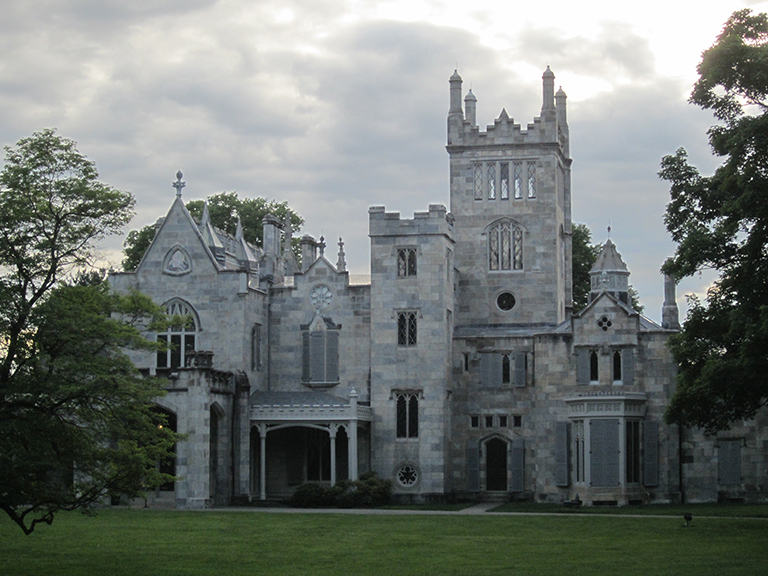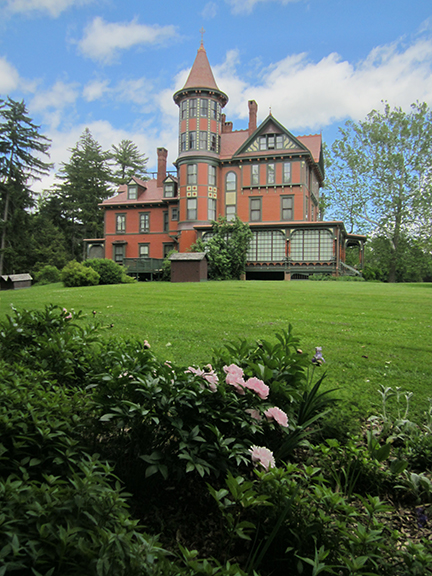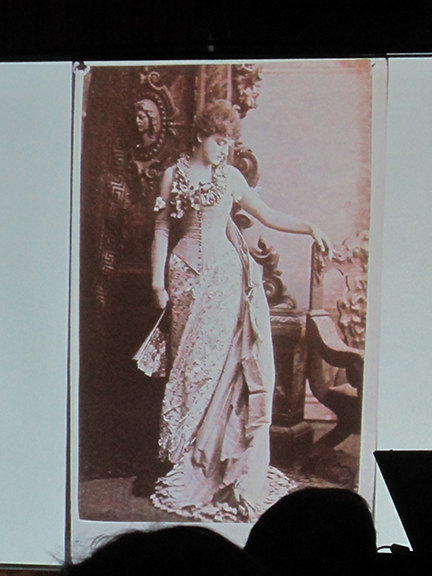When Howard Zar, the executive director of Lyndhurst, welcomed those of us attending the daylong symposium held May 22 at the Tarrytown site, he shared that he was “so surprised” by the response.
Indeed, interest was so high that the inaugural edition of “Mansions of the Gilded Age” had sold out.
“It’s like we’ve got Beyoncé today,” he said with a laugh. “This is really amazing.”
Over the next eight-plus hours, those in attendance would hear from nationally noted experts speaking on topics of Gilded Age architecture, interior design, fashion, jewelry, travel and society.
And while a barrage of technical and logistical issues threatened to mar the event, in the end, it was much more about the materials presented and the scope of the information shared that proved the symposium more than worthwhile.
Starting the day was Gary Lawrance, the event’s curator and an architect, author and historian. He took us right back in time with “Houses of the Hamptons: 1880-1930.” From there, it was a visit to the “Lost Vanderbilt Homes along Fifth Avenue” with author/photographer and historian Robert B. King.
Ulysses Grant Dietz, chief curator of the Newark Museum, was particularly entertaining – and not just to this avid jewelry lover – as he spoke about “Elegance and Aspiration: Money, Taste and Jewelry in America’s Gilded Age.”
And what’s jewelry without fashion? So, next up was fashion historian Caroline Rennolds Milbank, who spoke on “Fashion in an Age of Extravagance.”
Walter G. Ritchie, Jr., decorative arts specialist and architectural historian, took us from Orange, N.J., to Rhinebeck in Dutchess County to hear about “Luxury and Economy in the Gilded Age: The Suckleys Furnish Wilderstein.”
And finally, we sailed with the Titanic as Leighton Hammond Coleman III, the Spedden Family archivist, took us into “The World of Daisy Corning Stone Spedden: Edwardian Diarist, Titanic Survivor and Children’s Book Author.”
It was a day filled with talk about private clubs and tea gowns, gardeners and grand staircases, ballrooms and calling cards – but it also touched on harder-hitting topics including scandals, tragedies and family dramas along with industry and economics.
In short, there was a bit of everything that makes the world go around – no matter the time period.
For more, visit Lyndhurst.org. And see WAG’s June issue (“Celebrating the Globe”) for a story on Lyndhurst’s summer exhibition, “Defying Labels: New Roles, New Clothes.”– Mary Shustack





I’ve stayed there. My brother was a horticulturist at Lynnhurst for a few years and lived in the converted apartments that that were above what used to be the estates horse stables. I got a very in depth tour of the mansion, the grounds, the tunnel out to the train line at the edge of the property, I saw everything.